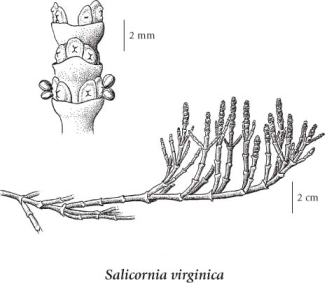Sarcocornia pacifica (Standl.) A.J. Scott
American glasswort (perennial saltwort)
Amaranthaceae (Amaranth family)
(Previously in Chenopodiaceae)
Introduction to Vascular Plants
American glasswort (perennial saltwort)
Amaranthaceae (Amaranth family)
(Previously in Chenopodiaceae)
Introduction to Vascular Plants
